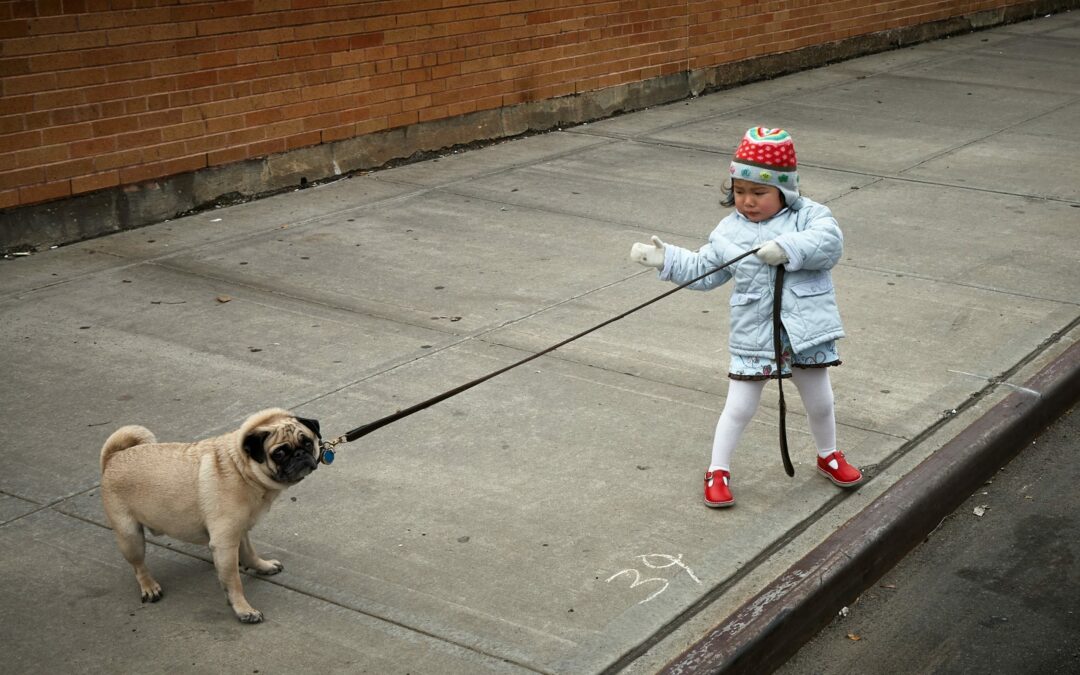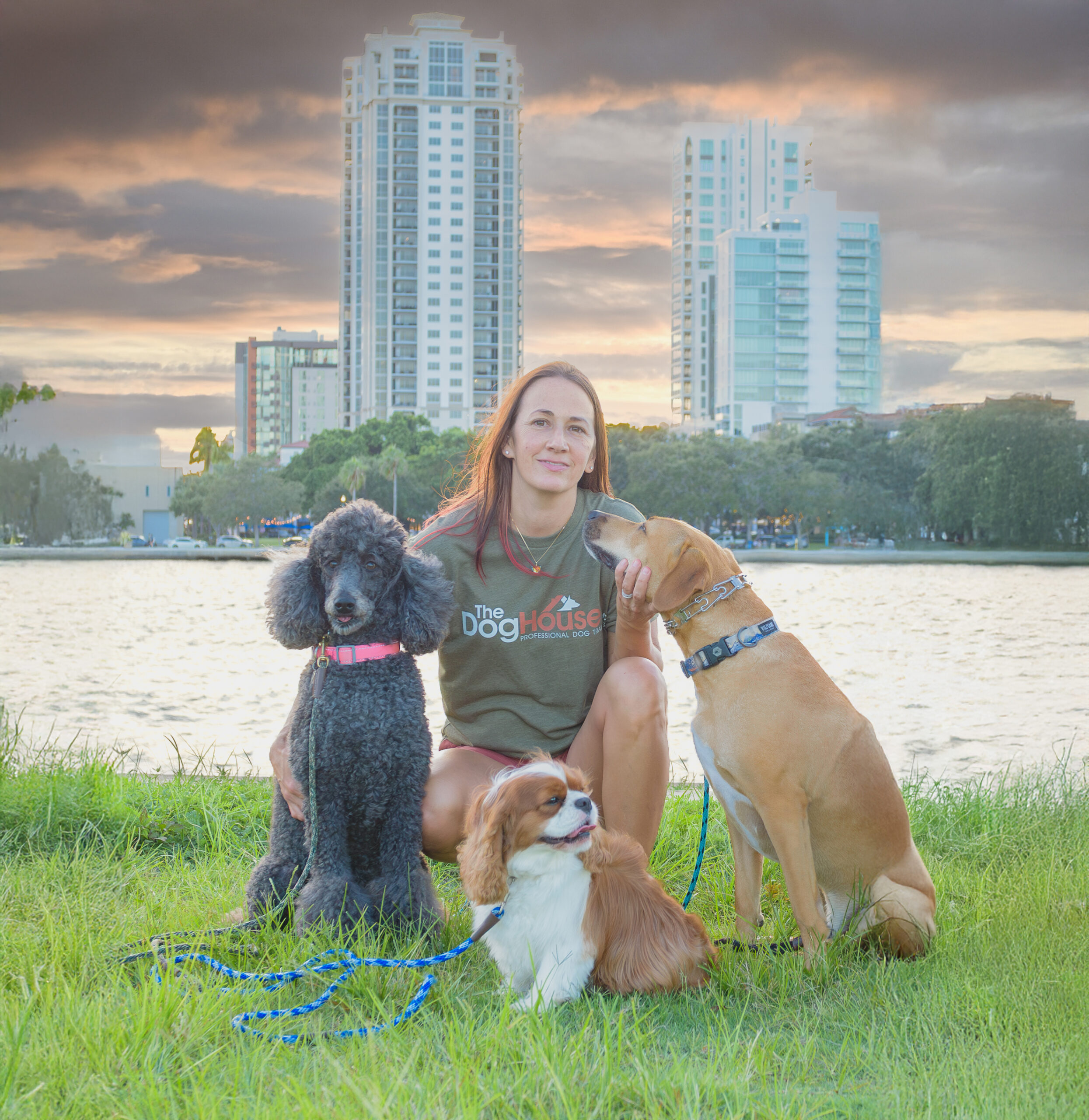As your dog ages or spends more time around kids, we want to ensure we keep their interactions positive. We all reach the end of our patience sometimes, even as parents, and so do our dogs!
- Please stand up for your dog: It isn’t always our children that need our protection from our dog; in fact, it is often the other way around. Recognize signs that your dog is tired of being a play toy for your child or when your child is too overwhelmed. When that happens, use it as a learning moment for your child to respect the dog’s space as you advocate for your dog.
- Provide Healthy Alone Time: Like people, dogs can reach a point where they need a break. Learn to recognize these signs and use positive crate training to allow your dog to have a private place to relax when kids are around.
- Healthy Games: Encourage their relationship by letting your kids and dog play with each other once the child is old enough. Retrieval games and hide-and-seek are fun for all parties involved.
- Family Walks: Walking together is a great bonding exercise. It teaches your child the value of training and family time from a young age. It also supports a positive association with your child because most dogs enjoy the outside time. Plus, allowing your children to take a turn holding the leash will help show the dog that even the “little people” have a leadership role.
- Recognize Aging: Their tolerance levels may decrease as your dog ages. If your dog got along with your child in its infant stages, it does not automatically mean that they will react the same as your child ages into their toddler years. On the plus side, as your child ages with your dog, they should become more receptive to understanding the rules surrounding the dog. Please remember to be diligent during these processes.



